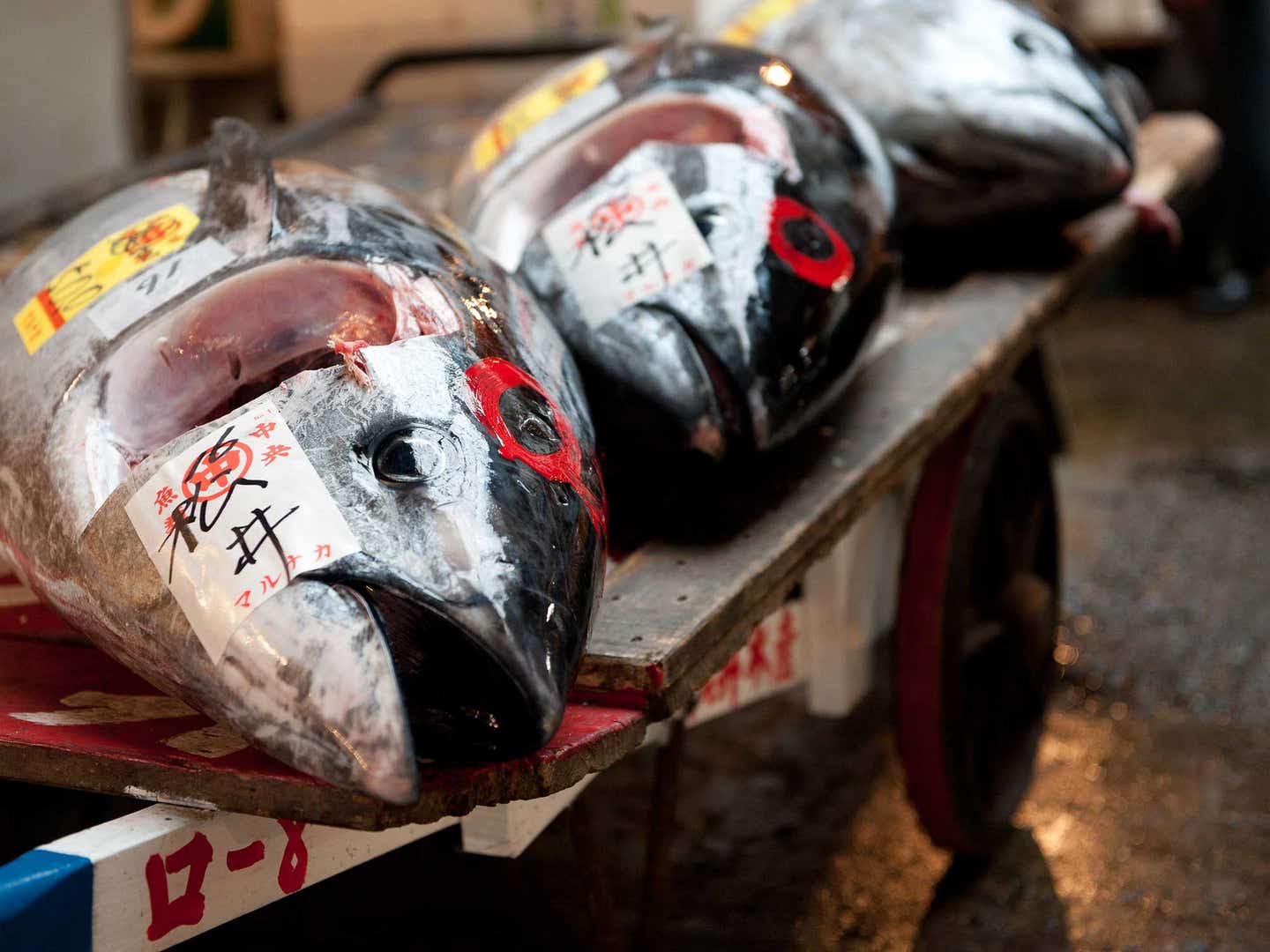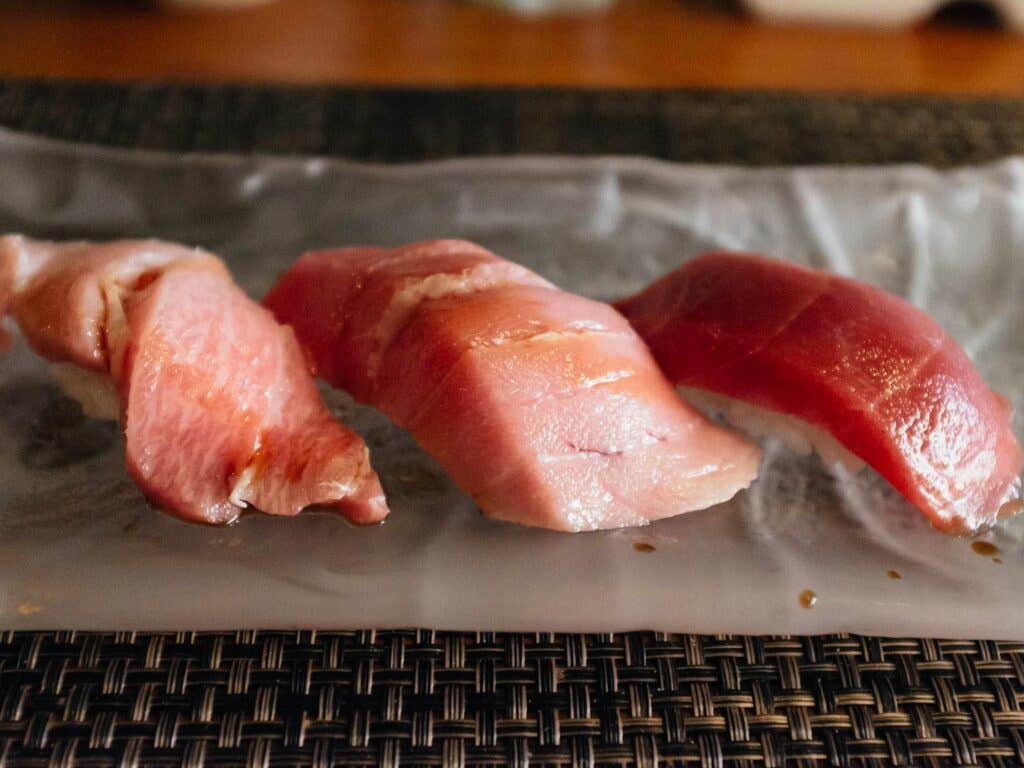
How Can We Save the World’s Few Remaining Bluefin Tuna?
New research projects that the world’s entire fishing industry may face catastrophic collapse by 2048
In the near future, we can expect one is six species on Earth to go extinct because of accelerating climate change. But some threats are even more urgent: According to a deep-dive by Quartz, unless the current situation improves fast, we're looking at the collapse of nearly all fish stocks in just over 30 years. That projection comes from the World Wildlife Federation, citing this 2006 Science report. It's a dire prediction, even with a few hefty grains of salt.
First on the chopping block will likely be overfishing poster child and omakase tasting menu favorite, Pacific bluefin tuna. Speaking to Quartz, Amanda Nickson, director of Global Tuna Conservation at the Pew Charitable Trusts, urged for immediate action within the next two years to prevent the species—which currently sits at 2.6% of its former population—from disappearing for good.
Beyond tuna, a host of other marine life—grouper, red snapper, Maine lobster, goldeye, and eel—are also at serious risk. That’s not to mention the plethora of other sea life, ranging from sharks to dolphins to squid. According to the WWF report, the world’s global fishing fleet is two to three times larger than what its oceans can support, and as a result, 53% of our fisheries are already fully exploited, with another 32% completely depleted or recovering from depletion.

2048 may at least feel a ways away, but restaurants across the world have already felt the impact. The price of bluefin tuna continues to soar and the rate that increase will only grow exponentially. Fishermen, enticed by the chance to hit the jackpot, have resorted to extreme, often illegal, measures to bring in a haul: according to Quartz, over “90% of the Pacific bluefin caught in 2013 were too young to reproduce—which means the last generation of the species could have been on any one of our plates.”
Besides the obvious refraining from eating sushi all the damn time, there are other ways we as humans can lend a hand to another species with which we share the earth. Though enforced quota-driven policy has been effective in the United States, it has yet to catch on elsewhere, placing the onus now on individual consumers. Food editors (like us) have an onus of our own to help change the narrative of endangered species as delicacies in hopes that revered sushi chefs, many of whom feel that their time-honored craft is under siege, will do the same. That's not to say some haven't already—for example, New York's famed Sushi Nakazawa employs a certified maritime liaison and uses properly-managed Atlantic bluefin in lieu of the Pacific variety.
As for consumers, we can all make conscious choices about the fish we choose to eat: the Monterey Bay Aquarium's Seafood Watch app color codes fish by sustainability (green for the best, yellow for a good alternative, and red for "avoid"). We can also patronize conscious establishments like Sushi Nakazawa, as well as sustainable restaurants like Miya Sushi in New Haven, Connecticut, which makes sushi using invasive fish species only. Lastly, when cooking or preparing sushi and sashimi at home, we can likewise look to less desirable fish for our fill: SAVEUR has a great collection of "trash fish" recipes here.
It’s yet to be determined which of man’s crimes against the earth can be undone, but studies suggest that this is one. If you won’t do it for the love of the planet, do it because your children, grandchildren, and all of future humanity deserve to experience the pleasures of fresh, sustainably-fished tuna in their lifetime.
Keep Reading
Continue to Next Story










